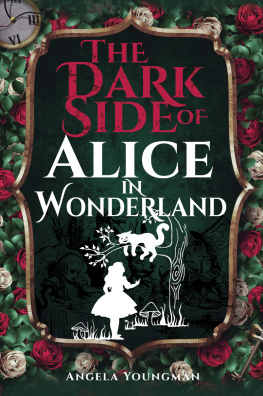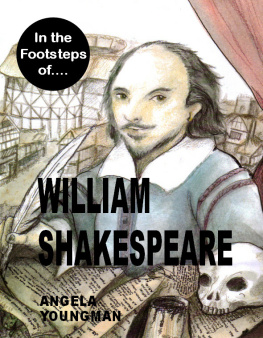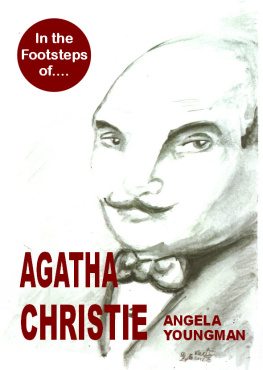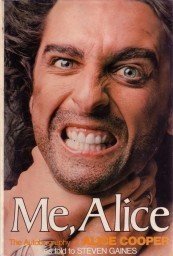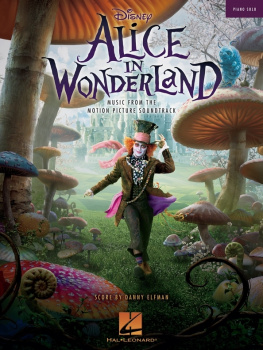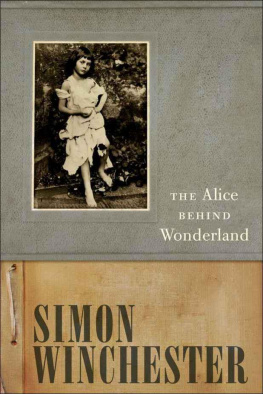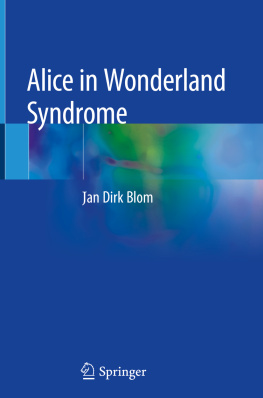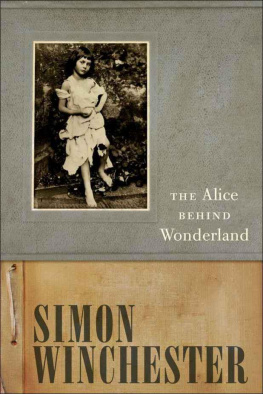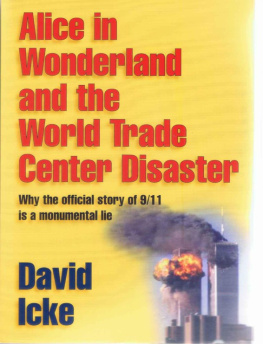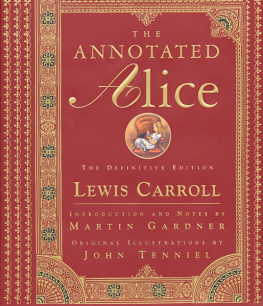Pagebreaks of the print version

The Dark Side of Alice in Wonderland
The Dark Side of Alice in Wonderland
Angela Youngman
First published in Great Britain in 2021 by
Pen & Sword History
An imprint of
Pen & Sword Books Ltd
Yorkshire - Philadelphia
Copyright Angela Youngman, 2021
ISBN 978 1 52678 581 7
eISBN 978 1 52678 582 4
Mobi ISBN 978 1 52678 583 1
The right of Angela Youngman to be identified as the Author of this work has been asserted by her in accordance with the Copyright, Designs and Patents Act 1988.
A CIP catalogue record for this book is available from the British Library.
All rights reserved. No part of this book may be reproduced or transmitted in any form or by any means, electronic or mechanical including photocopying, recording or by any information storage and retrieval system, without permission from the Publisher in writing.
Pen & Sword Books Ltd incorporates the Imprints of Pen & Sword Archaeology, Atlas, Aviation, Battleground, Discovery, Family History, History, Maritime, Military, Naval, Politics, Railways, Select, Transport, True Crime, Fiction, Frontline Books, Leo Cooper, Praetorian Press, Seaforth Publishing, Wharncliffe and White Owl.
For a complete list of Pen & Sword titles please contact
PEN & SWORD BOOKS LIMITED
47 Church Street, Barnsley, South Yorkshire, S70 2AS, England
E-mail:
Website: www.pen-and-sword.co.uk
or
PEN AND SWORD BOOKS
1950 Lawrence Rd, Havertown, PA 19083, USA
E-mail:
Website: www.penandswordbooks.com
Chapter 1
Who is Alice?
Who in the world am I? Ah, thats the great puzzle.
Alice in Wonderland
This is the question that Alice asks herself just after she has become a giant and frightened away the White Rabbit.
Was Alice a figment of Lewis Carrolls imagination or a real girl? It is a question that can never entirely be answered, given the vast array of views and concepts that have used, and continue to use, these stories over the decades. In the 159 years since Lewis Carroll created this iconic story, the historical Alice has emerged in the form of Alice Liddell. Alice has been transformed into incredibly scary versions, turned into a Lolita figure, become a fashion icon, political commentator, the victim of pornography, eroticised and involved in countless murders. Alice has even been turned into a revolutionary within an immersive theatre concept in which the audience realise they are acting out her identity. She has been psychoanalysed, linked to hallucinogenic drugs and turned into medical conditions. Add to that the mysteries that continually surround her creator with suggestions of child abuse, paedophilia and madness even suggestions of links to Jack the Ripper and a beloved childhood story takes on a much darker appearance.
The story of Alice begins on 4 July 1862 with a trip on the river Isis, a branch of the River Thames running through the centre of Oxford. Charles Lutwidge Dodgson, a mathematics lecturer at Christ Church College, Oxford and his friend, the Reverend Robinson Duckworth, took Alice, Lorina and Edith Liddell daughters of the Dean of Christ Church on a boating trip towards Godstow. It was a hot, sunny afternoon and Alice just ten years old quickly became bored. Alice later recalled what happened next:
The beginning of Alice was told to me one summer afternoon when the sun was so hot we landed in meadows down the river, deserting the boat to take refuge in the only bit of shade to be found, which was under a newly made hayrick.
To entertain Alice and her sisters, Charles Dodgson began to tell a story about a bored girl who followed a White Rabbit down a rabbit hole into Wonderland, meeting all kinds of crazy creatures such as the Mad Hatter, the March Hare, Playing Card gardeners painting white roses red, babies turning into pigs and a Queen of Hearts peremptorily ordering executions. Duckworth was so surprised by the story, that he turned round and asked where Dodgson had found it. Dodgson answered, quite simply, Im inventing it as we go along.
The children too were enthralled and at the end of the day, Alice requested that Dodgson should write down the story for her as a memento of her golden afternoon.
It was two years before Dodgson completed his written version of the story. On 26 November 1864, Dodgson visited the Liddells home and gave Alice a handwritten manuscript containing the story Alices Adventures Under Ground complete with his own hand-drawn illustrations. One year later, the story appeared in print for the first time from Macdonald publishers; printed at Dodgsons own expense and using his established pseudonym of Lewis Carroll, under which he had already published poetry such as the romantic poem Solitude in 1856. Dodgson had even personally commissioned and paid for the leading illustrator of the day Sir John Tenniel to undertake the illustrations for Alice in Wonderland . Dodgson never expected to make much money on the books and considered it might even make a loss.
Alice in Wonderland proved to be a success, popular with adults and children. One reviewer described it as a childrens feast of triumph and nonsense; it is nonsense with bonbons and flags never inhuman, never inelegant Never tedious. Queen Victoria wrote to him saying how much she admired it, and that she looked forward to his next book. Despite its publicity, the story did not make Dodgson a rich man. The extra income generated by the book never brought in more than around 1,000 a year, and there was only a limited amount of merchandising ever created such as a stamp box container and a biscuit tin. Although Dodgson considered turning the story into a theatre production, and even approached Arthur Sullivan about the possibility of composing some music, it came to nothing. It was only 20 years after the publication of Alices Adventures in Wonderland that producer Henry Saville Clarke was given permission to adapt the book on condition that the production should contain nothing of coarseness, or anything suggestive of coarseness.
Alices Adventures in Wonderland has never been out of print, with millions of copies being sold worldwide. It has been translated into 176 languages making it one of the most read books of all time.
Successive generations have not only enjoyed the story but have used it in ways far removed from anything that Dodgson could ever have imagined. After all, as a clergyman in minor orders, he would have undoubtedly been horrified at the way in which pornographers have put the story to use. Changing cultures and viewpoints have brought new opportunities but have also meant that the story has been analysed and criticised in ways that the original readers would never have anticipated.
Even the books author has come under considerable scrutiny, with innumerable opinions of his life, character and actions being put forward.
In a talk for the US Ripper Conference in 2000, entitled Jack Through the Looking Glass (or Wallace in Wonderland) , Karoline Leach commented:
Lewis Carroll has always been at the centre of a powerful mythology. His Alice books have tapped into the depths of the collective psyche in ways we cannot and never will fully understand. In some curious way, he seems to have told an allegorical story of what it is to be human, confused and alone in a mad and infinite universe.
The shy clergyman at the heart of this story has become that strange and inexplicable thing an icon. He was seen as a scholar-saint who avoided the adult world, a perpetual child who could only relate to children; a tragic deviant whose lifelong passion for a child Alice Liddell fired his burning creativity. As an icon to otherness did Carroll become famous and infamous. After his death, he was simply rebuilt in a different, better, image. For the Victorians and Edwardians, he became the ultimate symbol of innocence, of the elf-like and unworldly soul of Man before the Fall, whose life must be seen to have been beyond the taint of adult corruption.

